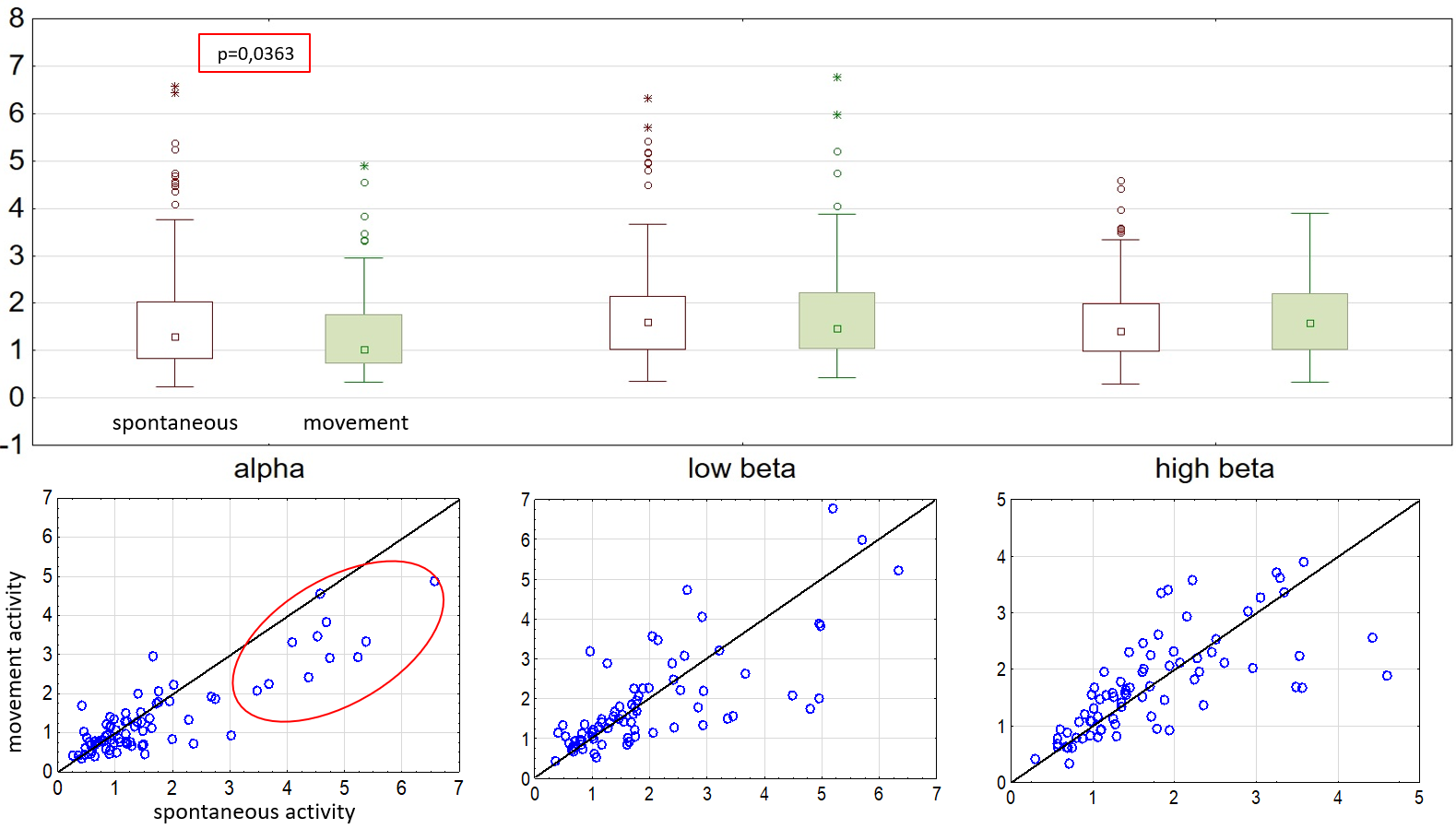Category: Parkinson's Disease: Neurophysiology
Objective: Our goal was to investigate subthalamic movement-related oscillatory dynamics in PD patients with different symptom severity.
Background: Stable oscillations at frequencies 8-30 Hz in subthalamic nucleus are one of biomarkers of Parkinson’s disease [1]. Levodopa treatment and deep brain stimulation reduce such oscillations alongside with patient’s symptoms severity reduction [2,3]. Movement execution also leads to STN oscillation dynamics, which could be observed in LFP and microelectrode recordings [4].
Method: Ten PD patients underwent clinical scores collection prior to DBS implantation. The microelectrode recordings were obtained from different STN depths of PD patients during lead implantation at rest for about 15 seconds (spontaneous activity) and then during sequence of fist clenching and unclenching for the same period (movement activity). For 72 neurograms in 17 hemi-spheres of 10 patients we calculated averaged PSD in alpha (7-12Hz), low beta (12-20 Hz) and high beta (20-30 Hz) frequency bands.
Results: Using Wilcoxon-Mann-Whitney test we found significant decrease (p=0.036) of average PSD values in alpha band during movement compared to spontaneous activity (figure 1). We didn’t find significant differences in low beta and high beta bands. Moreover, ANOVA test shows correlation of movement-dependent reduction of alpha oscillation and bradykinesia scores (F10=3.94; p=0.0013).
Conclusion: Presence of significant movement-related oscillatory reduction at frequencies 7-12 Hz in STN may speculate distinct functional roles of alpha and beta bands in movement control in PD patients.
References: 1. Little, S., Pogosyan, A., Kuhn, A. A., & Brown, P. (2012). β band stability over time correlates with Parkinsonian rigidity and bradykinesia. Experimental neurology, 236(2), 383–388.
2. Tinkhauser, G., Pogosyan, A., Tan, H., Herz, D. M., Kühn, A. A., & Brown, P. (2017). Beta burst dynamics in Parkinson’s disease OFF and ON dopaminergic medication. Brain : a journal of neurology, 140(11), 2968–2981.
3. Tinkhauser, G., Pogosyan, A., Little, S., Beudel, M., Herz, D. M., Tan, H., & Brown, P. (2017). The modulatory effect of adaptive deep brain stimulation on beta bursts in Parkinson’s disease. Brain : a journal of neurology, 140(4), 1053–1067.
4. Marmor, O., Rappel, P., Valsky, D., Bick, A. S., Arkadir, D., Linetsky, E., Peled, O., Tamir, I., Bergman, H., Israel, Z., & Eitan, R. (2020). Movement context modulates neuronal activity in motor and limbic-associative domains of the human parkinsonian subthalamic nucleus. Neurobiology of disease, 136, 104716.
To cite this abstract in AMA style:
A. Nezvinsky, E. Belova, A. Gamaleya, A. Tomskiy, A. Sedov. Relations between subthalamic alpha oscillations and motor control impairment in Parkinson’s Disease patients [abstract]. Mov Disord. 2022; 37 (suppl 2). https://www.mdsabstracts.org/abstract/relations-between-subthalamic-alpha-oscillations-and-motor-control-impairment-in-parkinsons-disease-patients/. Accessed December 12, 2025.« Back to 2022 International Congress
MDS Abstracts - https://www.mdsabstracts.org/abstract/relations-between-subthalamic-alpha-oscillations-and-motor-control-impairment-in-parkinsons-disease-patients/

